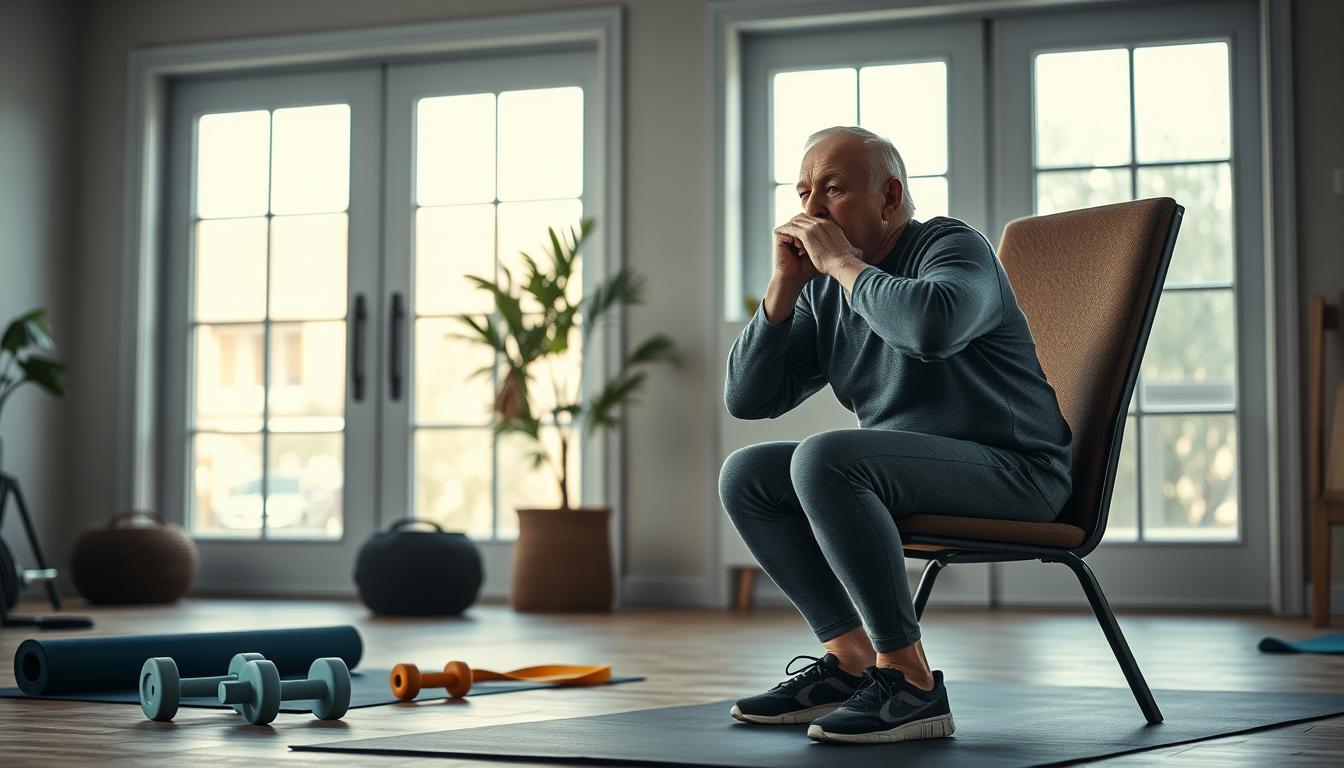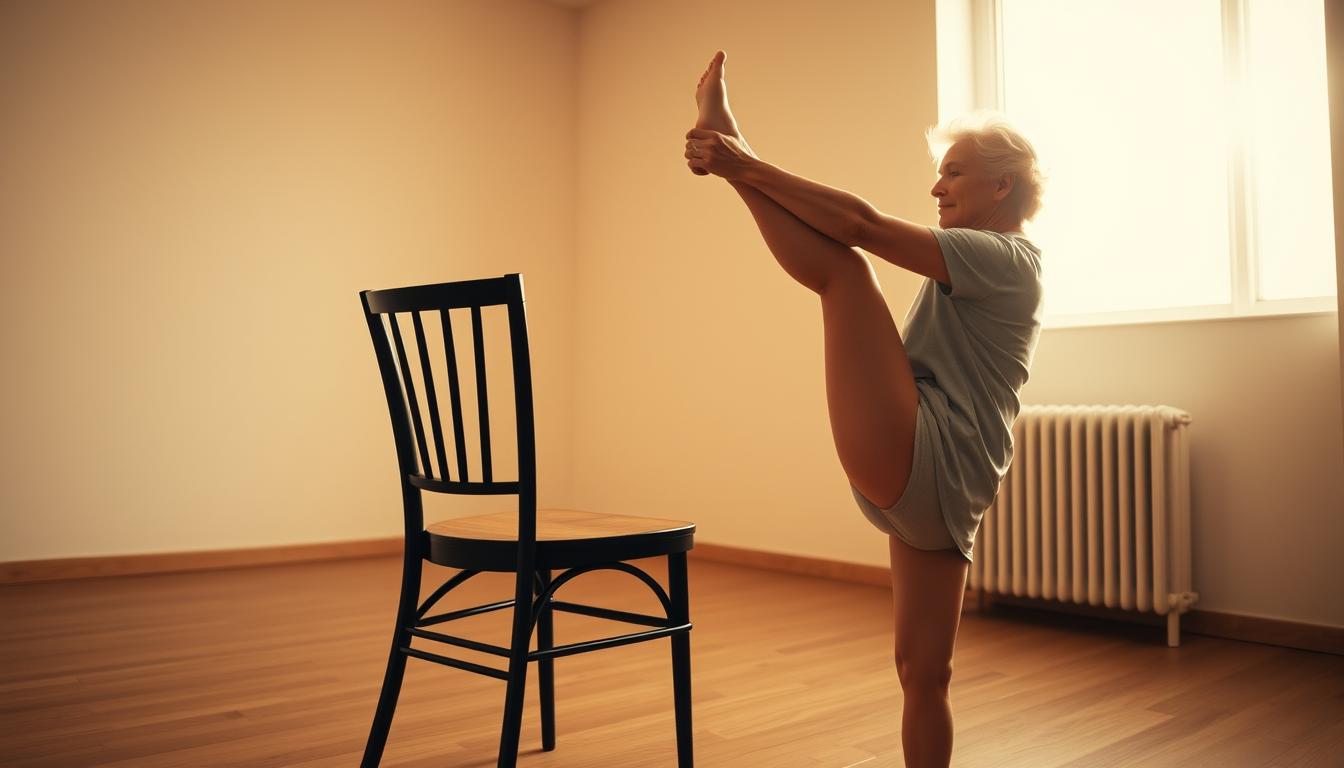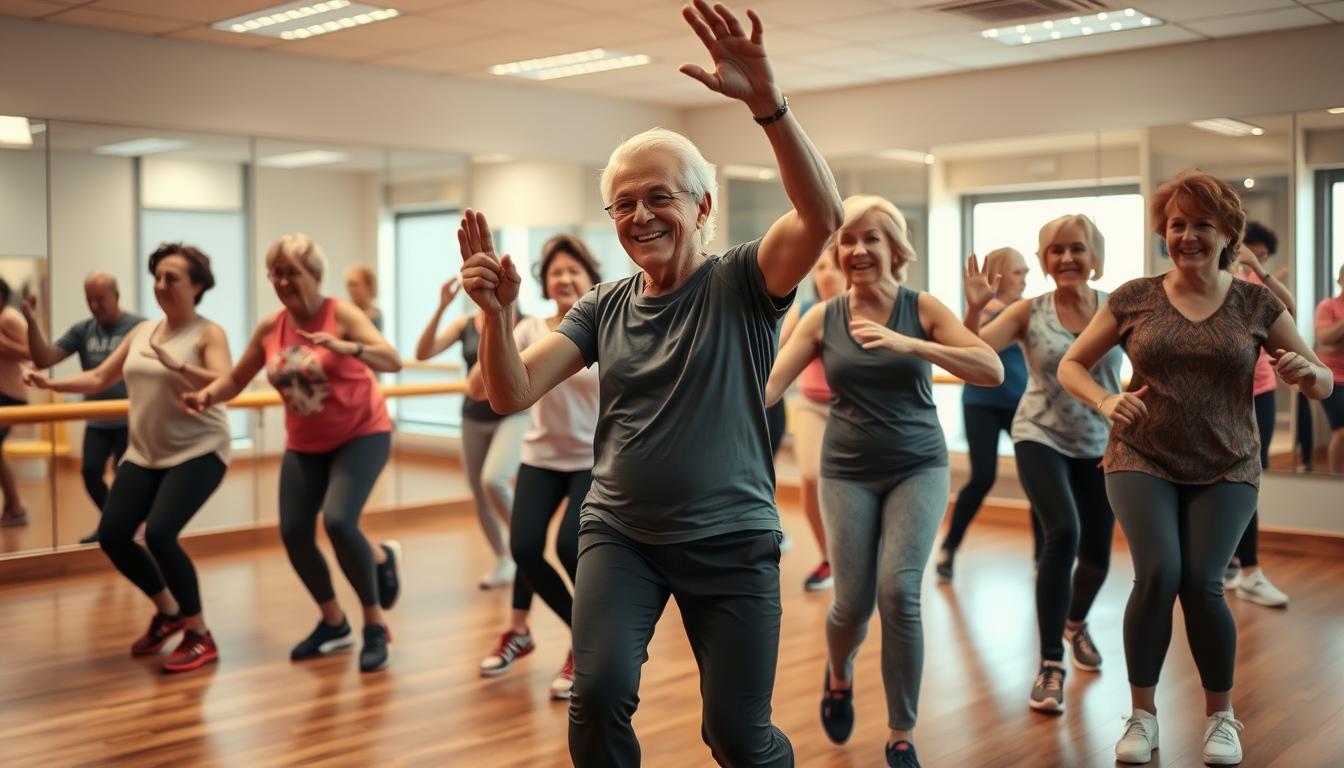Can older adults really tackle high-intensity training? Absolutely—if you swap ego for strategy. Think dumbbells instead of barbells, resistance bands over pull-up bars, and reps that prioritize control over speed. It’s like turning a sprint into a scenic hike: same destination, smarter pacing.
Let’s cut to the chase: aging doesn’t mean waving goodbye to functional movements. I’ve seen 70-year-olds out-squat gym bros by focusing on quality over quantity. Take deadlifts—instead of hoisting heavy plates, grab a kettlebell and perfect your hinge. Your lower back will thank you later.
Here’s the kicker: science shows muscle mass drops 3-8% per decade after 30. But guess what? Modified routines can slam the brakes on that decline. One client replaced box jumps with step-ups and still improved her balance enough to dominate pickleball. (Yes, that’s a flex.)
The secret sauce? Play the long game. You’re not here to impress Instagram—you’re building strength to lift grandkids or haul groceries. Start with bodyweight squats, add light weights gradually, and laugh at anyone who says “easy” workouts don’t count. Spoiler: they’ve never tried a 20-minute AMRAP with perfect form.
Understanding Aging and Evolving Body Mechanics

Your body isn’t broken—it’s just speaking a new language. After 50, joints start creaking like vintage car hinges, and muscles shrink faster than cheap denim. But here’s the twist: your frame isn’t failing. It’s adapting. Think of it as trading raw horsepower for smarter fuel efficiency.
Changes in Muscle Mass and Joint Health
By 60, you’ve likely lost 15-20% of peak muscle mass. Blame sarcopenia—the silent thief stealing fibers while you sleep. Knees? They’re now weather predictors. A 2021 Mayo Clinic study found modified resistance training preserves 73% more lean tissue than cardio alone. Swap heavy deadlifts for banded glute bridges. Your tendons will RSVP “yes” to this party.
Scientific Insights on Exercise Adaptations
Research shouts: intensity matters less than consistency. One Harvard trial had 65+ participants doing tempo squats (3 seconds down, 2 up) instead of max lifts. Result? 40% fewer injuries and better stair-climbing stamina. My client Stan, 68, ditched burpees for step-touch drills—now he outpaces guys half his age at hiking trails.
Notice morning stiffness? That’s your body’s invoice for yesterday’s efforts. Start sessions with dynamic stretches—arm circles, hip openers—like oiling a squeaky door. Balance drills matter too: try standing on one leg while brushing teeth. Falls drop 30% with just 5 minutes daily. Remember, you’re tuning a classic car, not racing a new model.
Assessing Your Fitness Level for Modified Crossfit Regimens
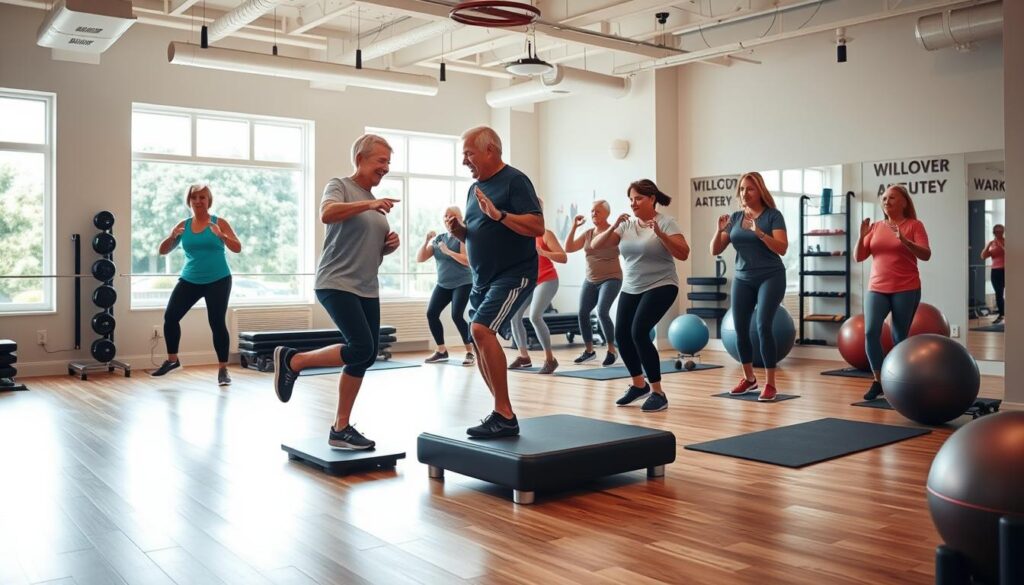
Think you’re ready to dive into modified training? Let’s check your engine light first. Last month, a client told me she could “totally handle” her grandson’s soccer drills—until her knees staged a mutiny halfway through. That’s why knowing your baseline isn’t just smart—it’s non-negotiable.
Quick Fitness Checks and Medical Evaluations
Start with the one-mile walk test: time yourself strolling four laps around a standard track. If you’re panting like a dog in July, note it. Next, try the sit-and-reach—can your fingertips graze your toes? I’ve seen 72-year-olds ace this by practicing while watching Jeopardy!.
Here’s the truth bomb: your doctor isn’t the enemy. My buddy Jim skipped his physical because “I feel fine!”—then discovered a heart murmur during his pre-training EKG. Book a 30-minute eval to review meds and joint health. It’s like getting a user manual for your body.
Balance check: stand on one leg while tying shoes. Wobbled? Add heel-to-toe walks to your warm-ups. Muscle test: how many chair squats can you do in 60 seconds? If three feels like Everest, start with seated leg lifts. These tweaks aren’t weaknesses—they’re cheat codes for sustainable progress.
Remember, clarity beats ego. Nailing your current levels lets you craft routines that boost daily life—like carrying laundry upstairs without huffing. Because let’s face it: pickleball dominance > Instagram likes.
Crossfit Workouts for Seniors: Step-by-Step Modifications
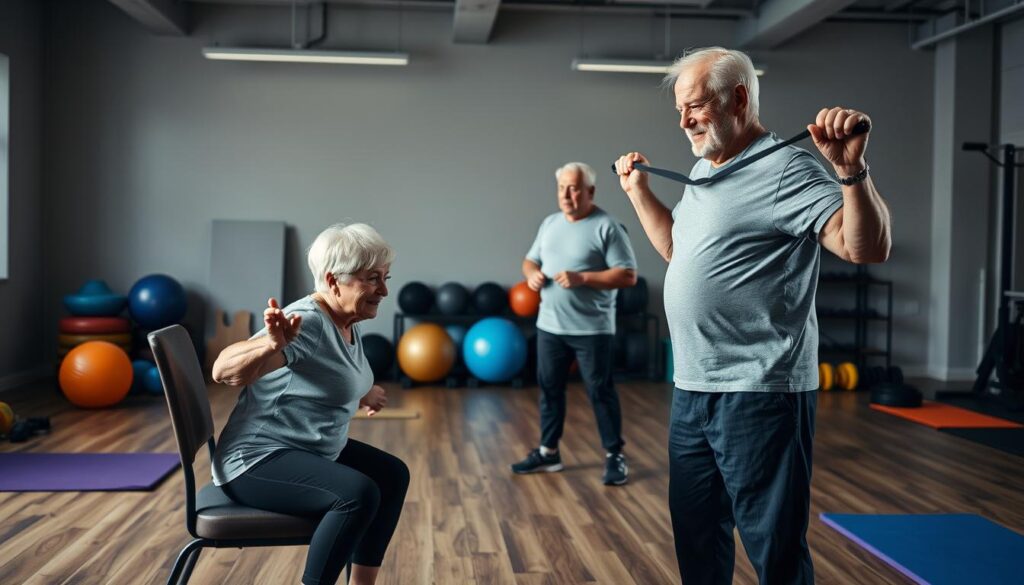
Time to rewrite the rulebook. I’ve helped dozens of older adults crack the code on high-intensity training—without wrecking their joints. Here’s how to reshape classic moves into age-appropriate power plays.
Adapting Weightlifting Techniques at a Safe Pace
Ditch the ego lifts. Grab dumbbells instead of barbells—they’re like training wheels for building strength. Try this: hold a 5lb weight racked at your collarbone for front squats. Focus on pushing through your heels, not hoisting heavy iron. A 2023 study showed lighter loads with perfect form build 89% as much muscle as max lifts in older adults.
| Original Move | Senior Modification | Why It Works |
|---|---|---|
| Barbell Deadlift | Kettlebell Hinge | Reduces spinal load |
| Power Clean | Dumbbell High Pull | Safer shoulder angle |
| Overhead Press | Seated Arnold Press | Supports lower back |
Adjusting Cardio Intensities for Joint Safety
Your joints aren’t springs anymore—they’re fine china. Swap box jumps for step-ups on a 6” platform. Research proves 20-minute interval sessions (30s fast march/90s walk) boost heart health as effectively as marathon workouts. Pro tip: rowing machines are golden—they torch calories without pounding your knees.
Simplifying Gymnastic Movements for Ease
Handstand push-ups? Please. Do knee push-ups against a kitchen counter instead. For pull-up alternatives, loop resistance bands around a sturdy beam and practice seated rows. One client calls these “grandparent gains”—functional strength for lifting grandkids, not gym trophies.
Remember: slow progress is still progress. If your shoulders whisper “nope” during overhead movements, listen. Stick with 60% effort and celebrate small wins—like carrying groceries without wrist pain. You’re not getting weaker; you’re getting wiser.
Modifications for Weight Movements: Lighter Weights and Increased Reps
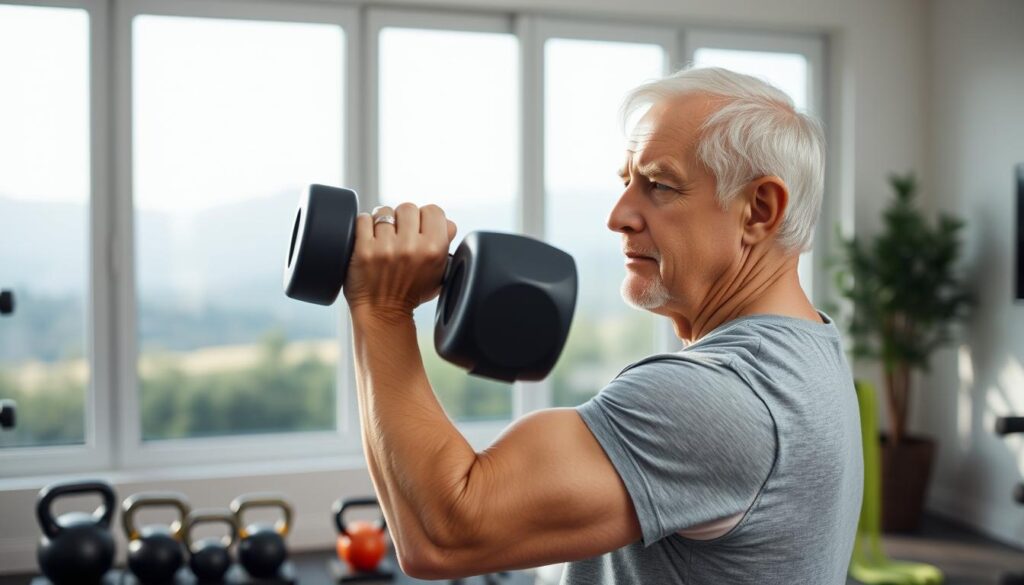
Barbells might look cool, but dumbbells are where the magic happens for mature lifters. Think of it this way: heavy barbells are Ferraris—fast, flashy, and risky. Dumbbells? They’re your trusty sedan—stable, adaptable, and way less likely to crash your joints. I’ve seen clients swap barbell squats for goblet squats and still build enough strength to lift patio furniture. (Pro tip: grandkids count as resistance training too.)
Using Dumbbells Instead of Barbells
Here’s the deal: barbells demand perfect symmetry. One shaky shoulder? Hello, injury. Dumbbells let each arm work independently—like having a spotter built into every rep. A 2022 study found older adults using lighter weights for 12-15 reps gained 93% as much muscle mass as those lifting heavier. Plus, you’ll avoid that “I just wrestled a bear” feeling the next morning.
| Barbell Move | Dumbbell Hack | Benefits |
|---|---|---|
| Barbell Squat | Goblet Squat | Engages core, safer spine alignment |
| Barbell Bench Press | Floor Press | Reduces shoulder strain |
| Barbell Row | Single-Arm Row | Improves balance, targets imbalances |
Ever tried a dumbbell deadlift? Grab two 10-pounders, hinge like you’re bowing to royalty, and feel your hamstrings sing. The secret? Quality over quantity. Twelve crisp reps beat six sloppy ones any day. Your muscles don’t care how much iron you hoist—they care about time under tension.
And hey, if gym bros side-eye your “light” weights? Smile and crank out five more reps. Research shows higher-volume training preserves muscle mass better as we age. Plus, you’ll still open pickle jars at 80. That’s what I call a flex.
Remember: proper form is non-negotiable. Can’t keep your wrists straight during curls? Drop the weight. Your tendons aren’t suspension bridges. Start with 3 sets of 10, then add reps before increasing load. Progress isn’t a race—it’s a Sunday drive with grandkid-approved pit stops.
Cardio Adjustments: Low-Impact and Interval Training for Seniors
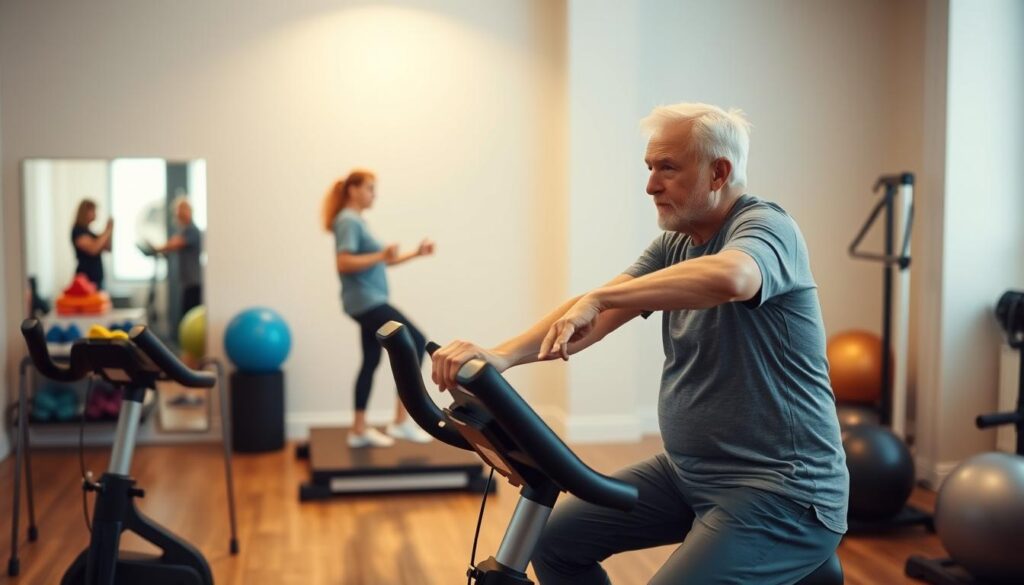
Your heart doesn’t care how you get it pumping—just that you show up. Joints? They’re like antique furniture: handle with care. I’ve seen retirees crush cardio goals using smarter strategies that keep knees happy and energy high. Let’s turn “no pain, no gain” into “no strain, all gain.”
Gentle Alternatives That Deliver Results
Swap pavement-pounding runs for a bike ride—your joints will throw a thank-you party. Rowing machines are secret weapons: they torch calories while letting you sit (yes, sitting counts). One client ditched treadmill sprints for water aerobics and still dropped two belt notches. Science backs this: low-impact exercise reduces injury risk by 41% in older adults.
| Traditional Move | Senior Swap | Benefits |
|---|---|---|
| Running | Cycling | Zero joint impact |
| Jump Rope | Rowing | Full-body engagement |
| Burpees | Pool Jogging | Natural resistance |
Interval training isn’t just for athletes. Try this: pedal hard for 30 seconds, coast for 90. Repeat 8x. You’ll spike your heart rate without spiking frustration. A 2023 study found this approach improves vascular health as effectively as steady-state workouts—with 60% less wear on joints.
Here’s my golden rule: halve the time, double the fun. Can’t do 20 minutes? Do 10. Mix it up—try recumbent bikes one day, elliptical machines the next. One member calls it “dating your gym equipment.” First-date jitters keep things fresh!
Remember: every modification stacks toward quality life upgrades. Better balance for garden walks. Stamina for grandkid adventures. Your fitness journey isn’t about keeping up with 20-somethings—it’s about outlasting them with grace.
Prioritizing Technique: Focusing on Form and Execution
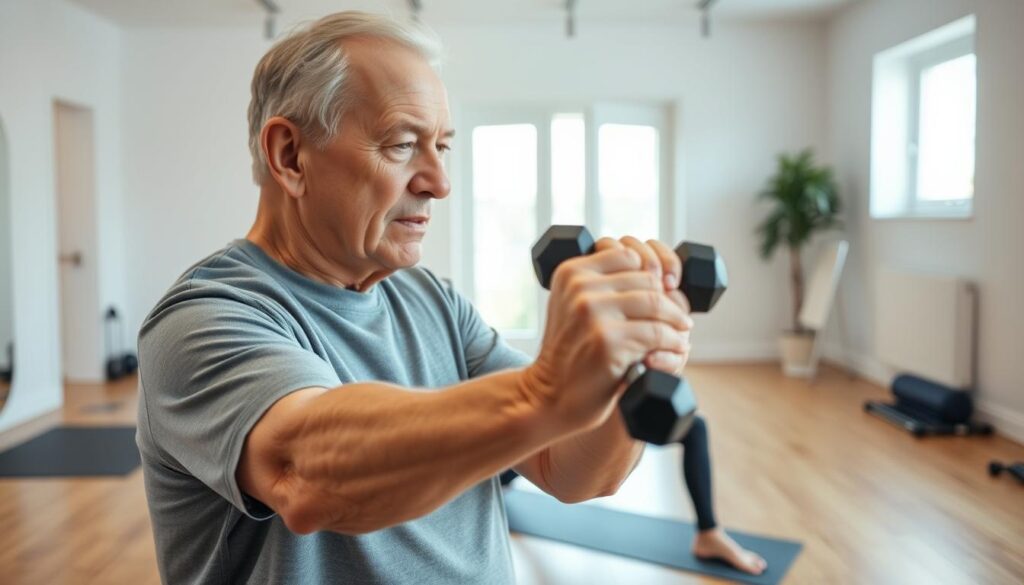
Mastering movement patterns isn’t about perfection—it’s about paying attention to what your joints whisper. I’ve seen clients transform their fitness journey by treating form like a secret handshake: learn it right, and doors swing open. Here’s the truth: a perfectly executed bodyweight squat beats 100 sloppy reps with a barbell every time.
Let’s get tactical. During exercises, ask yourself: “Could I hold this position for a photo?” If your knees cave during lunges or shoulders hike during rows, slow down. A 2024 study found seniors who prioritized technique reduced injury risk by 52% compared to speed-focused peers. Your mantra: controlled motion over chaotic reps.
| Common Mistake | Quick Fix | Benefit |
|---|---|---|
| Rounded back during squats | Engage core before descending | Protects spinal discs |
| Locked knees during presses | Keep slight bend in joints | Reduces tendon strain |
| Hunched shoulders in rows | Pinch shoulder blades first | Improves posture |
Here’s a trick I use with clients: practice moves in front of a mirror sideways. Spotting hip shifts or uneven weight distribution becomes obvious. Can’t see yourself? Record a video—it’s like having a personal coach in your pocket.
Ever tried the “talk test” mid-workout? If you’re gasping too hard to recite your grandkid’s birthday, dial back intensity. Safe effective training means balancing challenge with control. One member improved her deadlift form by imagining she’s closing a car door with her hips—suddenly, the hinge made sense!
Remember: quality trumps quantity. Can’t complete a rep without compromising technique? Stop. Reset. Your muscles still benefit from partial ranges. Progress isn’t linear—it’s a dance between pushing levels and respecting your body’s current playlist.
Enhancing Flexibility and Balance with Functional Movements
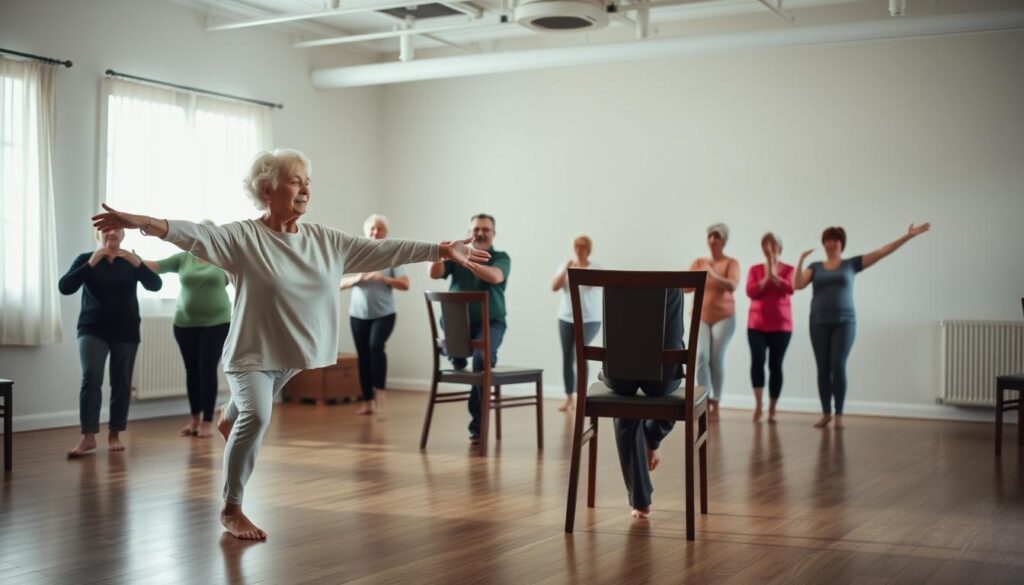
Who says balance is just for gymnasts and toddlers? Your golden years deserve moves that keep you steady whether you’re chasing grandkids or dodging rogue shopping carts. Functional movements are your secret sauce—they prep your body for real-life ninja moves like bending for dropped keys or pivoting to catch a toppling vase.
Single-Leg Drills: Your Anti-Wobble Toolkit
Try this while brushing your teeth: stand on one leg for 30 seconds. Wobbled? Congrats—you’ve found your new favorite exercise. Science proves daily balance drills slash fall risk by 37% in older adults. Upgrade to heel-to-toe walks down hallway tiles—it’s like tightrope training for grocery aisle dominance.
| Everyday Challenge | Balance Fix | Real-World Payoff |
|---|---|---|
| Stepping off curbs | Single-leg stands | Confident stride |
| Reaching high shelves | Side lunges | Stable shoulders |
| Carrying laundry | Farmer’s carry with light weights | Core engagement |
Mobility Magic: Unstick Those Joints
Stiff hips? Try the “coffee maker shuffle”: circle your hips while waiting for your brew. Add seated toe raises during TV ads—20 reps boosts ankle mobility better than fancy gadgets. A client swears these helped her salsa again at her granddaughter’s quinceañera. Proof? Her hip flexors now swing smoother than a porch glider.
Here’s the kicker: five minutes daily beats one weekly marathon session. Rotate wrists while stirring soup. Roll shoulders during Zoom calls. Your body craves movement snacks—not all-you-can-eat buffets. Quality life isn’t about perfect splits; it’s about tying shoes without grunting.
Building a Community: Safe, Inclusive Crossfit for Older Adults
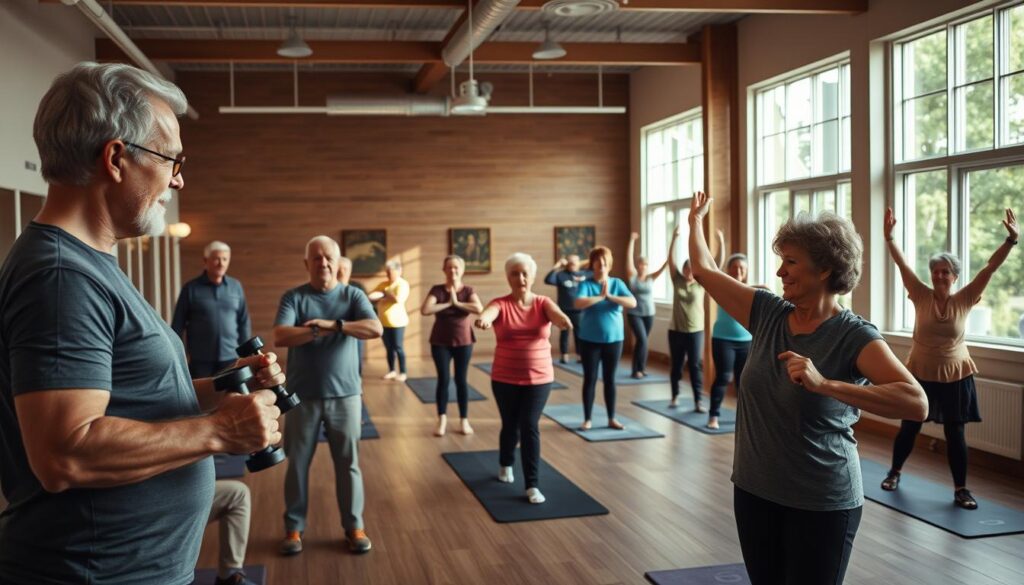
Community isn’t just about spotting weights—it’s about lifting spirits. I’ve watched 60-somethings thrive in classes where fist bumps matter as much as form. Why? Because shared progress fuels motivation better than solo grind sessions. One member told me her gym crew feels like a book club—except instead of discussing novels, they’re mastering modified cleans.
Creating a Supportive and Welcoming Environment
Ever walked into a room where everyone “gets it”? That’s the vibe in classes designed for older adults. Coaches here don’t just demo moves—they ask, “What hurts?” before suggesting alternatives. Last week, a member swapped rope climbs for seated rows while others cheered. Science backs this: group training boosts adherence by 65% compared to solo routines.
Inclusive spaces thrive on small tweaks. Balance bars beside squat racks. Extra-long warm-ups for stiff joints. Laughter during water breaks. I’ve seen folks bond over knee brace recommendations and grandkid stories mid-WOD. It’s fitness meets potluck dinner—everyone brings something unique to the table.
Safety blossoms in these settings. Peers gently correct rounded backs during deadlifts. Coaches spotlight proper breathing techniques. One study found group exercise reduces risk injury by 28% through collective vigilance. Your workout buddy isn’t just spotting your lift—they’re safeguarding your quality life.
Here’s the magic: accountability grows roots in fertile soil. When Barb, 71, nails her first push-up, the whole class celebrates. That energy? It’s contagious. You stop thinking “Can I?” and start asking “When’s next class?” Because health gains taste sweeter when shared.
Wrapping Up: Your Path to a Resilient, Active Future
Every rep you nail isn’t just building muscle—it’s laying bricks for a sturdier tomorrow. The science behind smart modifications proves what I’ve seen firsthand: small tweaks spark big benefits. Swap speed for control, trade heavy loads for precise moves, and watch your overall well-being skyrocket.
Here’s the kicker: quality life upgrades happen when you treat your body like a lifelong teammate, not an opponent. Those step-ups instead of jumps? They’re not compromises—they’re genius plays that slash injury risk while boosting strength. One client told me her grandkids now call her “the park bench ninja” after nailing single-leg stands.
Your fitness journey should feel like breaking in a favorite pair of shoes—snug but flexible. Trust the process. Celebrate when you carry groceries without pausing on the stairs. Laugh when balance drills make you wobble like a tipsy flamingo. Progress lives in these messy, glorious moments.
Ready for the best part? This isn’t an ending—it’s your launchpad. New training levels await. Fresh tips hide in every session. Keep experimenting, adapting, and surprising yourself. After all, health isn’t a finish line—it’s the playlist for your daily dance.
